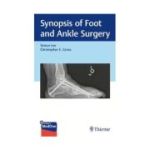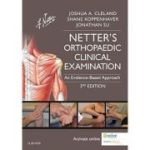The Basic Principles of External Skeletal Fixation Using the Ilizarov Device

MRP: 682,50 lei
?
This is the Manufacturer's Recommended Price. The selling price of the product is displayed below.
Price: 204,75 lei
Difference: 477,75 lei
Availability: within the limits of available stock
Author: Solomin, Leonid N.
ISBN: 978-88-470-0512-9
Publisher: Springer Nature
Publishing Year: 2008
Pages: 358
Category: ORTHOPEDICS
DESCRIPTION
This book is the first comprehensive text on the Ilizarov method to come from Russia since Professor Ilizarov passed away in 1992. This text covers both acute traumatic reconstruction with the Ilizarov method as well as orthopaedic reconstruction with the Ilizarov techniques. The author’s unique method of cross-sectional anatomy evaluation improves the safety of pin and wire insertion. This book will serve as a new foundation for the next generation of orthopaedic surgeons interested in limb reconstruction with circular external fixation. Dror Paley, MD, FRCSC In this manual you can find not only an analysis of the basis of external fixation, but also the author’s original approach in this field. Certainly, no book can include all possible clinical situations in orthopaedic practice. Nevertheless, this manual is different from others in being easy to read. Consequently the execution of each method of external fixation can be readily grasped. Furthermore, the perfectly prepared illustrations will be of significant benefit to the orthopaedic surgeon. Prof. Vladimir I. Shevtsov I am pleased to present this book to experts on external fixation and to those who are taking only their first steps in this field. I regret that "the method for the unified designation of external fixation" is only now becoming the standard language of orthopaedic surgeons. If it had been developed and introduced earlier, it would have been possible to avoid many of the criticisms (sometimes justified) of the training in the method resulting from "individual" perceptions of the information in articles, instructional lectures, and manuals. The clever design, the high-quality illustrations, the wide range of pathological conditions considered for application of external fixation, and the style of presentation of the material are great advantages of this manual. I am sure that it will prove to be of great interest to orthopaedic surgeons in many different countries. Table of contents I. General Aspects of External Fixation 1. Introduction 2. Brief Historical Background, Classification 3. Advantages and Disadvantages, Indications and Contraindications 4. Equipment 5. Terms and Designations of External Fixator Constructs 6. Biomechanical Principles 6. 1. Relationship of Transosseous Elements (K-wires, Half-pins) to Surrounding Tissues 6. 2. Control of Bone Fragment Position 6. 3. Control of Bone Fragment Stability 7. Contradictions of External Fixation. Combined External Fixation (CEF) 8. Method of Unified Designation of External Fixation 9. Atlas for Insertion of Transosseous Element "Reference Positions" (8 levels for each segment) 10. Preoperative Planning 11. Principles of Frame Construction 12. References II. Specific Aspects of External Fixation 1. Introduction 2. Humeral Fractures 2. 1. Proximal Humerus (11-) 2. 2. Diaphyseal Fractures (12-) 2. 3. Distal Humerus (13-) 3. Forearm Fractures 3. 1. Proximal Forearm (21-) 3. 2. Diaphyseal Fractures (22-) 3. 2. 1. Ulnar Diaphysis 3. 2. 2. Radial Diaphysis 3. 2. 3. Diaphysis of the Radius and Ulna 3. 3. Distal Forearm (23-) 4. Femoral Fractures 4. 1. Proximal Femur (31-) 4. 2. Diaphyseal Fractures (32-) 4. 3. Distal Femur (33-) 4. 4. Patella (91. 1-) 5. Tibial and Fibular Fractures 5. 1. Proximal Tibia and Fibula (41-) 5. 2. Diaphyseal Fractures (42-) 5. 3. Distal Tibia and Fibula (43-) 5. 4. Ankle Injuries (44-) 5. 5. Chronic Ankle Injuries 6. Compound Fractures 7. Malunited Fractures 8. Correction of Long Bone Deformities 8. 1. Technical Tips and Tricks for the Humerus and Forearm 9. Basics of Aesthetic Correction of the Lower Extremities (A. A. Artemjev, O. A. Kaplunov, L. N. Solomin) 10. Non-Uunions, Pseudoarthroses and Long Bone Defects 11. Combined Strained Fixation of Long Bones (CoSF) 11. 1. Equipment for CoSF and Principles of Application 11. 2. Humerus 11. 3. Femur 11. 4. Tibia 11. 5. Forearm 11. 6. Clavicle 11. 7. Postoperative Protocol 12. Pelvis Injury 12. 1. Malunited Pelvic Fractures 13. Foot 13. 1. Forefoot Injuries 13. 2. Midfoot Injuries 13. 3. Hindfoot Injuries 13. 4. Correction of Foot Deformities 14. Large Joint Pathology 14. 1. Shoulder 14. 2. Elbow 14. 3. Wrist 14. 4. Hip 14. 5. Knee 14. 6. Ankle 15. Infectious Complications of Long Bone Fractures 16. Features of External Fixation in Children, Elderly and Senile Patients 17. General Principles of Patient Management in Postoperative Period 18. Mistakes and Complications of External Fixation 19. References
Book categories
-Special order
-Publishers
-Promo
-Callisto Publications
-New books
-- 2551,50 leiMRP: 2835,00 lei
- 3024,00 leiMRP: 3360,00 lei
- 2956,80 leiMRP: 3360,00 lei
Promotions
-- 170,10 leiMRP: 378,00 lei
- 2551,50 leiMRP: 2835,00 lei
- 3024,00 leiMRP: 3360,00 lei













OUR VISITORS OPINIONS